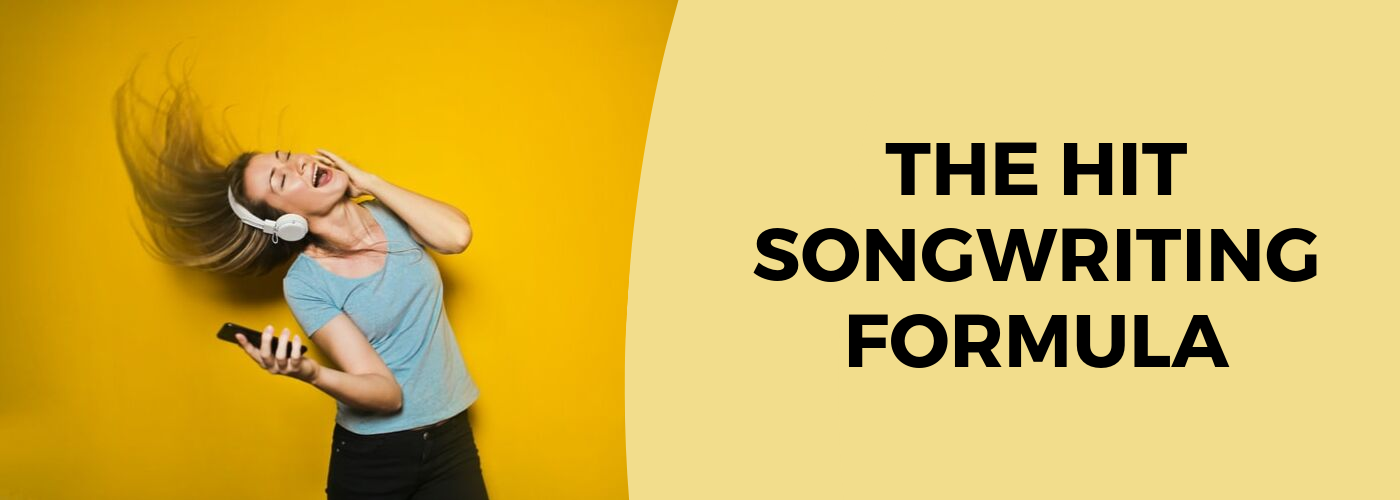For many songwriters, having a number one single is their biggest goal in life. A top of the charts song is enough to make a comfortable living for the rest of your life but having a hit isn’t easy. You may be saying to yourself; “if only there was a magic songwriting formula for writing a hit song.” Well, that dream may not be as far off as you think.
Over the decades there have been many industry professionals who’ve studied nothing but number one singles. In doing so they discovered a pattern among those that have succeeded and those that were never heard.
What’s been uncovered is that there is a certain set of rules or a formula songwriters can follow to assure their songs have maximum commercial success. Although it doesn’t guarantee a song will become number one it conditions the song to succeed, should the opportunity arise.
To bring these rules up to current times I looked at the #1 singles from past 12 months (2018 into 2019) and found that the majority of them followed what’s listed below. It may not be for every artist, but using outlined songwriting formula will assure that the tracks you write reach as large an audience as possible.
1. Song Length
Song length seems to be an integral part of the hit songwriting formula. People don’t have the attention spans to listen to a track that’s too long. Then again you don’t want your track to be so quick that the listener misses or forgets it.
The majority of #1 singles clock in at around three minutes, give or take thirty seconds. At the extremes it’s pretty rare to see a number one track that goes over four minutes or under two. So, if you need to stretch things one way or another, be sure to stay within those confines.
Below are some examples of tracks from the past year, each sitting at about three to three minutes and thirty seconds.
2. Don’t Bore Us, Get To The Chorus
You may have heard this phrase before and it’s pretty self explanatory. In a nutshell, average listeners aren’t in it for the verses, they want something catchy they can latch on to. In other words, they want the chorus or hook of the song.
If you wait too long to get to this part they’ll lose interest quickly. The solution to this problem is to get to the chorus as quickly as possible. On average this should take around 45 seconds and no longer than a minute at the most.
To be extra safe with this part of the songwriting formula, many pop artists open their songs with the chorus or at least a hook, which grabs attention from the get go. Below are a couple number one examples of this in 2020.
3. Hook Line And Sinker
A memorable hook is perhaps the most important part of the hit songwriting formula. It also makes a great starting place when you’re sitting down to write a song.
The hook is the biggest thing your listener will remember from a song and should sum it all up. Think of it as the part they would sing to their friends when they’re trying to describe it in a few seconds.
It has to be memorable and it needs to be catchy so that it sticks with them long after the song’s over. It can be lyrical, musical or something as simple as a few “whoa whoas” following the chorus.
Whatever it is, every hit song needs to have a hook. In my opinion, even if your not writing for the charts a hook is necessary, it’s what steers the ship on the songs message.
4. Key To Success
Believe it or not, whether a song is in a major or minor key can have merit on its success. After going through the number one hits of the past year I found that all of them except for one were in a major key.
Why does this seem to be such an integral part of the songwriting formula? My theory simply comes down to the fact that people would rather listen to music that makes them feel good rather than what which brings them down.
A major key can make make that happen even when the song has sadder lyrics. That’s not to say there isn’t a place for minor songs. Plenty of people love to listen to sad and melancholy music but that style just won’t make it to number one as easily.
Check out some examples of hit songs both in major keys below.
5. Ideal BPM
The tempo of a song is also known to play into whether or not a piece of music will rise in the charts. That said, there are both upbeat and slower songs that top the charts, each with their own ideal tempo.
A few years ago the ideal tempo for an upbeat track was 120BPM and this still is a great starting place. However, recent years have seen a rise in the tempo on number one singles. In current trends fast paced songs have an average BMP of around 135BPM.
Here’s an example at a hit that clocked in at 136 BPM:
5. Keep The Verses Short and Simple
When it comes to mastering the songwriting formula for hits, the more digestible you can make a track the better. Keeping the verses simple in form will make them memorable and relatable when the second verse roles around.
Not only that but a short verse will help you get to the main attraction (the hook) even quicker. Just make sure your verses are still adding content to the song, despite simplicity. The verses are still an integral part of progressing a song’s story.
6. Extend The Chorus With A The Pre-Chorus
Short verses have one major downfall in pop music; they can dramatically cut down on the length of a song. The solution to this is something you see often in hit songs and that’s too add a pre-chorus.
The pre-chorus will add excitement that builds to the gratification of the chorus. Although the lyrics can change each time it’s sung, it’s common to keep the pre-chorus the same as the song progresses. This is often the better choice as it breeds familiarity.
As already mentioned, any songwriting techniques to make the music quickly digestible is part of the magic formula. A repeating pre-chorus does this beautifully and by the end of the first chorus your listener will already know more than half the song.
7. Hit Songwriting Structure
With all of this in mind what is the best structure when trying to write a number one hit? The tried and true method is:
- Intro
- Verse 1
- Pre-Chorus
- Chorus
- (Hook)
- Verse 2
- Pre-Chorus
- Chorus
- (Hook)
- Bridge
- Chorus
The hook is in brackets as it’s placement tends to vary. Often it will act as a type of post-chorus that brings things back to the verse. Other times it’s right in the Chorus. Either way a hook is absolutely necessary somewhere in the song.
Conclusion: Does The Perfect Hit Songwriting Formula Exist?
Unfortunately, there’s no surefire way to write a guaranteed number one hit. There are a number of factors that contribute to a songs success beyond the song itself.
You could have the most perfectly crafted hit song ever written but if you just put it on the internet with no following or follow-up chances are it won’t amount to much. In the same way there are many songs that don’t follow a formula and still manage to reach number one.
So sadly there’s no magic songwriting formula that will get you a hit song and make you rich quick. However, by following the guidelines laid out above you’ll be left with a song that’s ready to become a hit.
Your music will be easily digestible, catchy and memorable, all the key ingredients to a hit song. This way when the opportunity arises for your music to reach an audience it’ll spread as far and as fast as possible.
If you liked the tips in this guide head over to the Sundown Sessions Blog for songwriting tips, home recording tricks and more. Once you’ve written a great song and are looking to get it in front of a larger audience head over to SyncSongwriter.com to learn how you can license your music for TV and film to start making a successful income.

